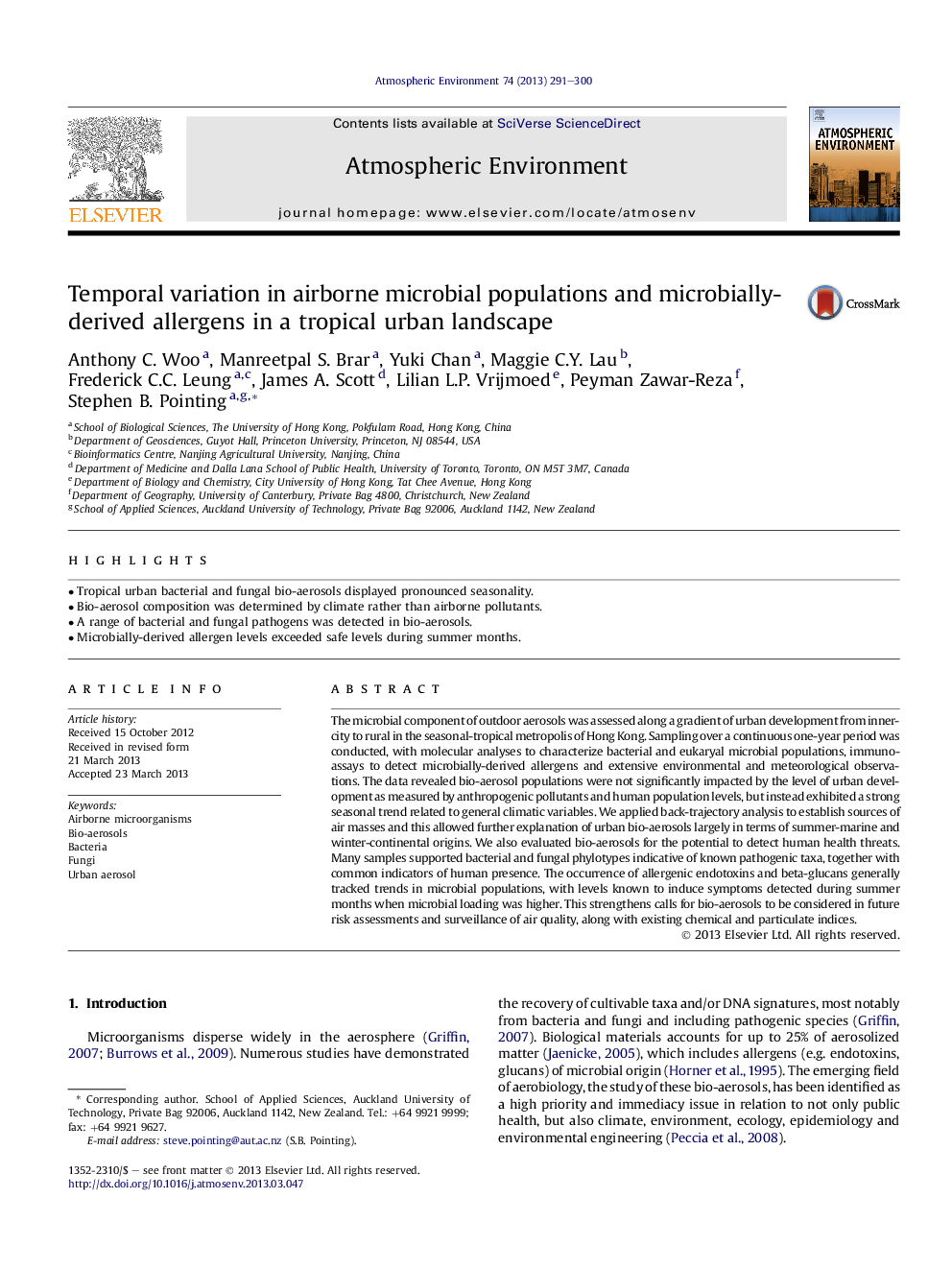| Article ID | Journal | Published Year | Pages | File Type |
|---|---|---|---|---|
| 4438195 | Atmospheric Environment | 2013 | 10 Pages |
•Tropical urban bacterial and fungal bio-aerosols displayed pronounced seasonality.•Bio-aerosol composition was determined by climate rather than airborne pollutants.•A range of bacterial and fungal pathogens was detected in bio-aerosols.•Microbially-derived allergen levels exceeded safe levels during summer months.
The microbial component of outdoor aerosols was assessed along a gradient of urban development from inner-city to rural in the seasonal-tropical metropolis of Hong Kong. Sampling over a continuous one-year period was conducted, with molecular analyses to characterize bacterial and eukaryal microbial populations, immuno-assays to detect microbially-derived allergens and extensive environmental and meteorological observations. The data revealed bio-aerosol populations were not significantly impacted by the level of urban development as measured by anthropogenic pollutants and human population levels, but instead exhibited a strong seasonal trend related to general climatic variables. We applied back-trajectory analysis to establish sources of air masses and this allowed further explanation of urban bio-aerosols largely in terms of summer-marine and winter-continental origins. We also evaluated bio-aerosols for the potential to detect human health threats. Many samples supported bacterial and fungal phylotypes indicative of known pathogenic taxa, together with common indicators of human presence. The occurrence of allergenic endotoxins and beta-glucans generally tracked trends in microbial populations, with levels known to induce symptoms detected during summer months when microbial loading was higher. This strengthens calls for bio-aerosols to be considered in future risk assessments and surveillance of air quality, along with existing chemical and particulate indices.
